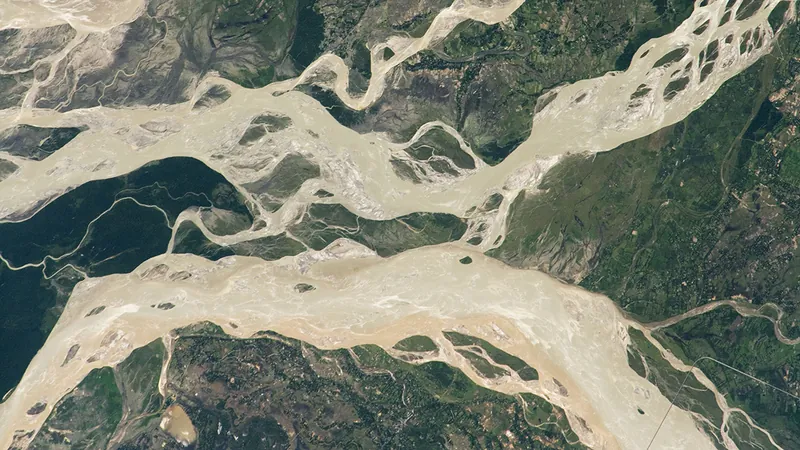
Revolutionary Findings: Predictable Migration Patterns in the Brahmaputra River
2025-07-02
Author: Li
Unlocking the Mysteries of the Brahmaputra-Jamuna River
Historically regarded as chaotic, the migration of multichannel braided rivers like the Brahmaputra-Jamuna in Bangladesh is now revealed to be surprisingly predictable, according to groundbreaking research. While prior studies deemed their shifting paths to be erratic, recent insights suggest a more coherent migration pattern that could significantly improve flood and erosion management.
A Closer Look at the Brahmaputra-Jamuna's Migration
Researchers Li and Limaye meticulously analyzed a 180-kilometer stretch of the Brahmaputra-Jamuna River, utilizing satellite imagery to trace changes over two decades, from 2001 to 2021. Their innovative use of a statistical technique called dynamic time warping enabled them to accurately map the evolving sizes, shapes, and routes of the river's channels.
Surprising Patterns Emerge
What they discovered was astonishing: about 43% of the river's channels exhibited gradual migration, contradicting the previously held notion of chaos. These channel threads shifted at a remarkable average rate of roughly 30% of their width each year, which is notably faster than that of many meandering rivers.
Tackling Future Challenges
The implications of these findings are far-reaching. With a better understanding of channel migration patterns, strategies for mitigating erosion and flooding can be developed, particularly in densely populated regions. The research offers hope for the nearly 600,000 residents living on the river's islands, suggesting that predicting such behavior could lead to more effective disaster preparedness.
A New Era in River Management
As the study progresses, researchers emphasize the importance of coherent migration in addressing environmental challenges. By adapting existing models designed for meandering rivers to braided channels, we are stepping into a future where the unpredictability of river systems can be tamed.
These revolutionary insights mark a significant advancement in the field of hydrology and river management, positioning the Brahmaputra-Jamuna as a key focus for future studies aimed at safeguarding communities and ecosystems against the perils of flooding and erosion.




 Brasil (PT)
Brasil (PT)
 Canada (EN)
Canada (EN)
 Chile (ES)
Chile (ES)
 Česko (CS)
Česko (CS)
 대한민국 (KO)
대한민국 (KO)
 España (ES)
España (ES)
 France (FR)
France (FR)
 Hong Kong (EN)
Hong Kong (EN)
 Italia (IT)
Italia (IT)
 日本 (JA)
日本 (JA)
 Magyarország (HU)
Magyarország (HU)
 Norge (NO)
Norge (NO)
 Polska (PL)
Polska (PL)
 Schweiz (DE)
Schweiz (DE)
 Singapore (EN)
Singapore (EN)
 Sverige (SV)
Sverige (SV)
 Suomi (FI)
Suomi (FI)
 Türkiye (TR)
Türkiye (TR)
 الإمارات العربية المتحدة (AR)
الإمارات العربية المتحدة (AR)